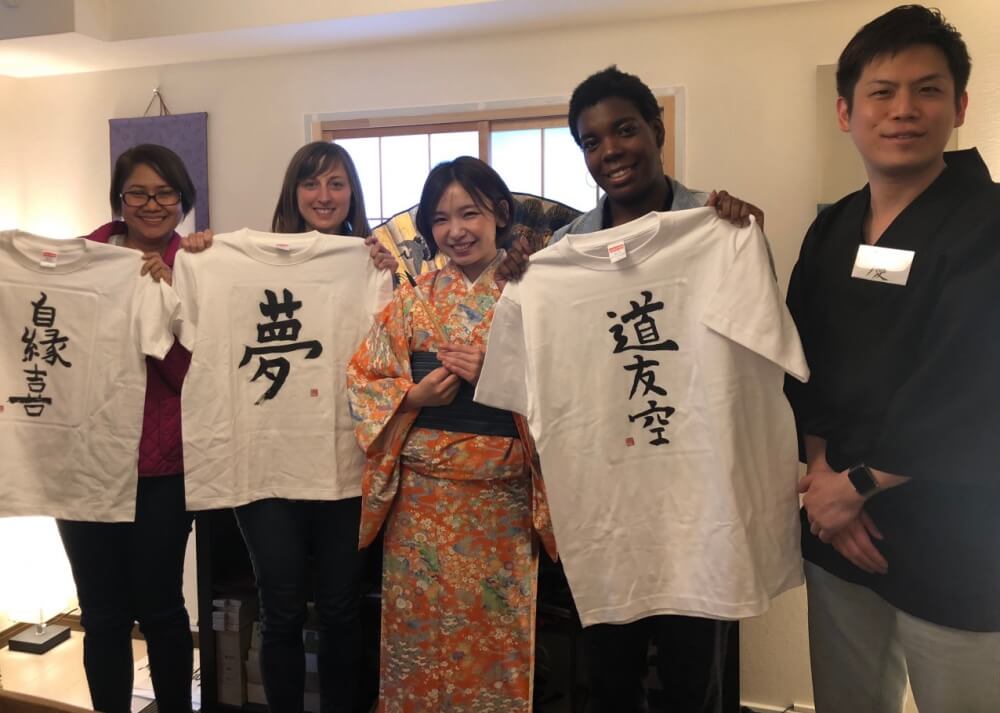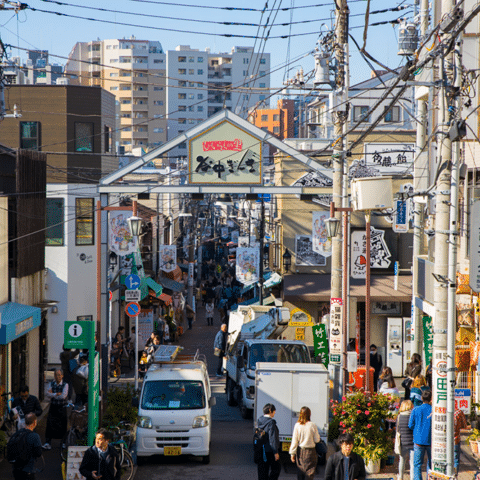
In Arigato Japan we love to share Japanese culture through food and we are always looking for new partners and passionate people to work with to reach our goal of creating “Delicious Memories” with visitors to Japan. Today we are excited to tell you more about our brand-new food tour in Tokyo, which includes a traditional calligraphy experience with experts! To do so, let us introduce the great people at ConveyJapan, who organize the calligraphy class.
1. Thank you for this interview and we are quite excited about starting this new tour with you, including food and traditional experiences. Can you please introduce yourself and your company?
Hello, My name is Kei Yuzawa, I was born and raised in Tokyo. I like traveling overseas and experienced a lot in many countries. I wanted tourists visiting Japan to experience Japanese culture the way I was able to while traveling. I established ”ConveyJapan Inc.” in January, 2019 in Sugamo to spread Japanese culture all over the world.
As my first work, I decided to introduce Japanese calligraphy to foreigners. Calligraphy is a required subject in elementary and secondary school in Japan. I work together with five professional calligraphers who sympathize with my idea. I will keep trying hard to introduce calligraphy overseas and respond to foreigners who want to know Japanese culture.
2. Can you please explain Japanese calligraphy?
Calligraphy is a form of Japanese traditional art that expresses kanji and kana characters artistically by using a brush, ink, an ink stone, and a paper, known as “the Four Treasures of the Study”. Calligraphy practitioners focus their minds and express their emotions through their brushstrokes.

The impressions imprinted on the characters vary according to the brush speed and pressure, as well as the shade of the ink. The same letter may give different impressions, depending on the strength, softness, or thickness of the strokes, the ornamentation of the character, how to move the brush, the shade of the ink, the balance and beauty of the entire arrangement, and the meaning of the letters. Calligraphy can be enjoyed not only as a form of art but understanding the words will also bring a sense of enjoyment.
Even in modern Japan, it is widely used in the making of the “first writing”, a ritual during the New Year’s Day to write a word of celebration that reflects the aspirations and wishes for the coming year.
In this modern era, many people are attracted to learn calligraphy through calligraphy classes or long-distance learning although personal computers are commonly used and opportunities to use brushes are decreasing. In addition, there is a subject called “Shosha”, which is a part of elementary and junior high school education in Japan, where students learn writing using a brush. Indeed, calligraphy is traditional art that is close to the lives of Japanese people.
3. You have different instructors, can you please tell us a bit about them and their experiences?
Emi: When she was young, she received training from her mother, who was a calligrapher, and became familiar with calligraphy. she majored in calligraphy at university and since she has been graduated she has been involved in various activities related to calligraphy: teaching, writing books about calligraphy, ink wash painting (a form of calligraphy) demonstration, and many others. Her life is dedicated to calligraphy.
Chigusa: She has been learning calligraphy since she was young, and learned it seriously during high school and college in a calligraphy department. After graduation, she worked as a calligraphy teacher at a high school for 4 years, and she is currently managing a calligraphy class, delivering cultural lectures, teaching part-time at high schools, and doing many other activities.

Miki: She started calligraphy at 8, opened a personal academy for students in all age groups and she is active in art activities with the theme “Create smiles through calligraphy”. She has participated in hundreds of projects including publications, exhibition at Kiyomizu temple in Kyoto, and various offers from enterprises, as well as business promotional videos and media activities. She aims to express feelings and thoughts without any limitation of the form.
Nanako: She has 20 years of experience in Japanese calligraphy. She is a professional Japanese calligrapher with a teaching qualification recognized by the “Calligraphy Association”. In pursuit of the beauty of characters, in unity with not only the brush but also the heart, stroking the brush, she creates calligraphy works pieces daily and conveys the charm and elegance of calligraphy.
Haruna: She has been learning calligraphy for over 15 years, and has a license to teach calligraphy. She was majored in Regional Development Studies at university in Japan and studied Asian Studies in Canada as an exchange student. When she was in Canada, she organized a Japanese culture club to introduce Japanese culture to Canadians, helded some events with other Japanese students such as origami (folding paper), tea ceremony, Japanese summer festival, and calligraphy.
4. What are the benefits of joining this experience? Why would you recommend travelers to try calligraphy?
People have different characteristics in handwriting, and also our physical conditions and feelings affect it very much. Thus, we can know and express our feelings and though through calligraphy as same as meditation, and needless to say, people can learn Japanese culture from it. In our program, people can learn some basics of Calligraphy and practice many times what they want to write, such as their favorite phrases and their names, and then print their masterpieces on T-shirts. The T-shirts is the best Japanese souvenir.

5. Our new partnership tour is located in the Sugamo area of Tokyo, which is often called as the “older generation’s Harajuku”. Can you please tell us more about this place?
Sugamo Jizou-dori Shopping Street in Sugamo has completely different atmosphere from the Tokyo Metropolitan area. There are many old restaurants and small shops which offer traditional food and items. Sinsho-ji Temple is located at the entrance of the shopping street, and there is a large stone image of Jizo (a bodhisattva of guardian of children). Kogan-ji Temple is located in the middle of the street, and it is the most popular temple in Sugamo. People believe that it has strong power to help with recovery from illness and extend their own lifetimes.
6. The Sugamo area has a lot of great food to try! Can you please let us know what is your favorite Japanese food from the neighborhood?
I want people to try warabi mochi, which is a type of dumpling traditionally made using bracken starch. I recommend a unique green tea topped with warabi mochi. In addition, I recommend Sekka, a popular shave ice shop!
7. What do you think about food tours?
There are many shops which sell traditional food and drinks in Sugamo. I think food reflects culture very much, so a food tour is a great way to introduce Japanese culture to foreigners. I would like tourists to enjoy Japanese food in Sugamo.

8. Thank you for your time! Do you have any personal message: feel free to add anything you want to share with our readers and followers!
I would like your readers to consider: Do you have any favourite or important words in your life?
Why don’t you write the words in Japanese calligraphy?
Calligraphy is a part of traditional Japanese culture. Probably, you feel writing Japanese by using a brush and ink is difficult, but no worries! Professionals of calligraphy teach you very kindly from the very basics.
One of the benefits of calligraphy is that you can enhance your concentration through your activities. It’s like meditation. At the end of our class, we give a T-shirt which is printed with our your own calligraphy handwriting as a souvenir. I hope to help you to make an unforgettable memory in Japan.



